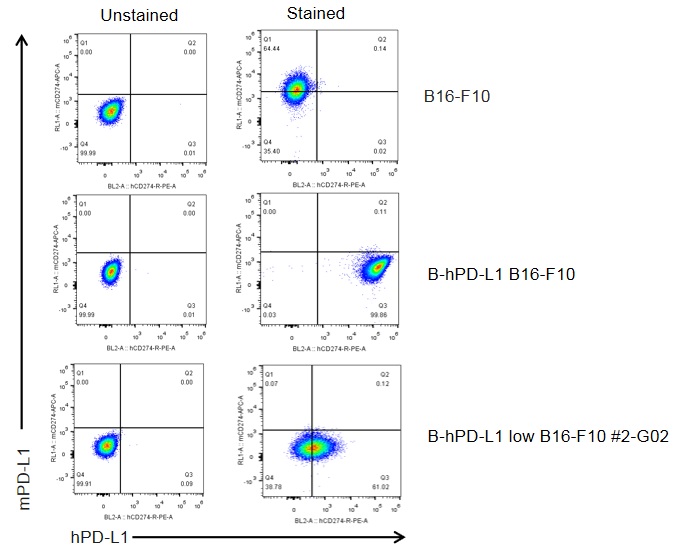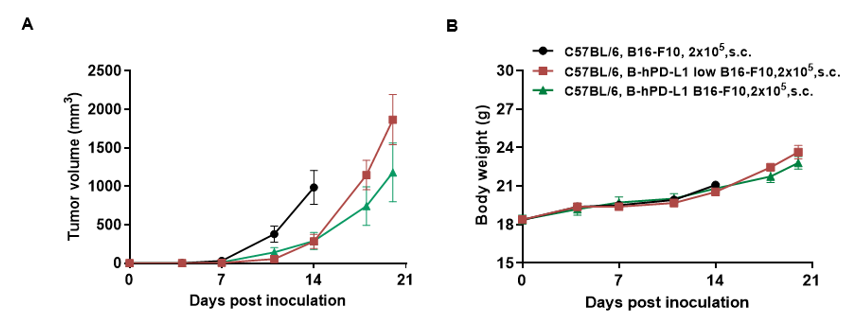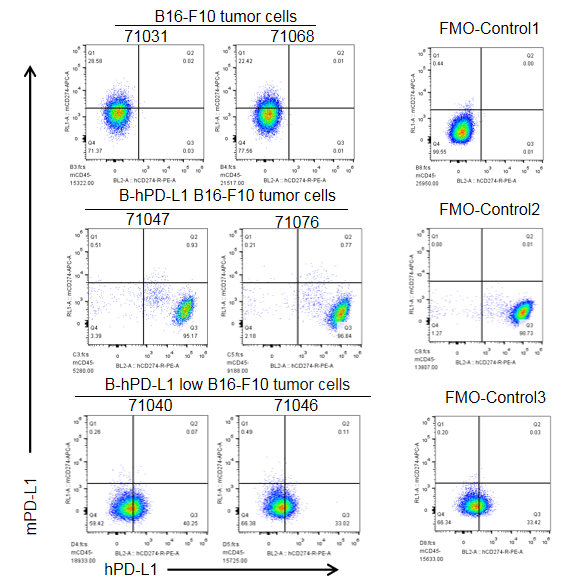|
Common name |
B-hPD-L1 low B16-F10 | Catalog number | 310890 |
| Aliases | B7-H, B7H1, PDCD1L1, PDCD1LG1 | Disease | Melanoma |
|
Organism |
Mouse |
Strain | C57BL/6 |
| Tissue types | Skin | Tissue | Skin |
The mouse Pdl1 gene was replaced by human PD-L1 coding sequence in B-hPD-L1 low B16-F10 cells. Human PD-L1 is expressed on the surface of B-hPD-L1 low B16-F10 cells.
Application
B-hPD-L1 low B16-F10 cells have the capability to establish tumors in vivo and can be used for efficacy studies.
Targeting strategy
The exogenous promoter and human PD-L1 coding sequence was inserted to replace part of murine exon 3. The insertion disrupts the endogenous murine Pdl1 gene, resulting in a non-functional transcript.
Protein expression analysis

PD-L1 expression analysis in B-hPD-L1 low B16-F10 cells by flow cytometry. Single cell suspensions from wild-type B16-F10, B-hPD-L1 B16-F10 and B-hPD-L1 low B16-F10 cultures were stained with species-specific anti-PD-L1 antibody. Mouse PD-L1 was detectable in wild-type B16-F10 cells. Human PD-L1 was detectable in B-hPD-L1 low B16-F10 cells, and human PD-L1 was expressed highly on the surface of B-hPD-L1 B16-F10 cells. The 2-G02 clone of B-hPD-L1 low B16-F10 cells was used for in vivo experiments.
Tumor growth curve & Body weight changes













